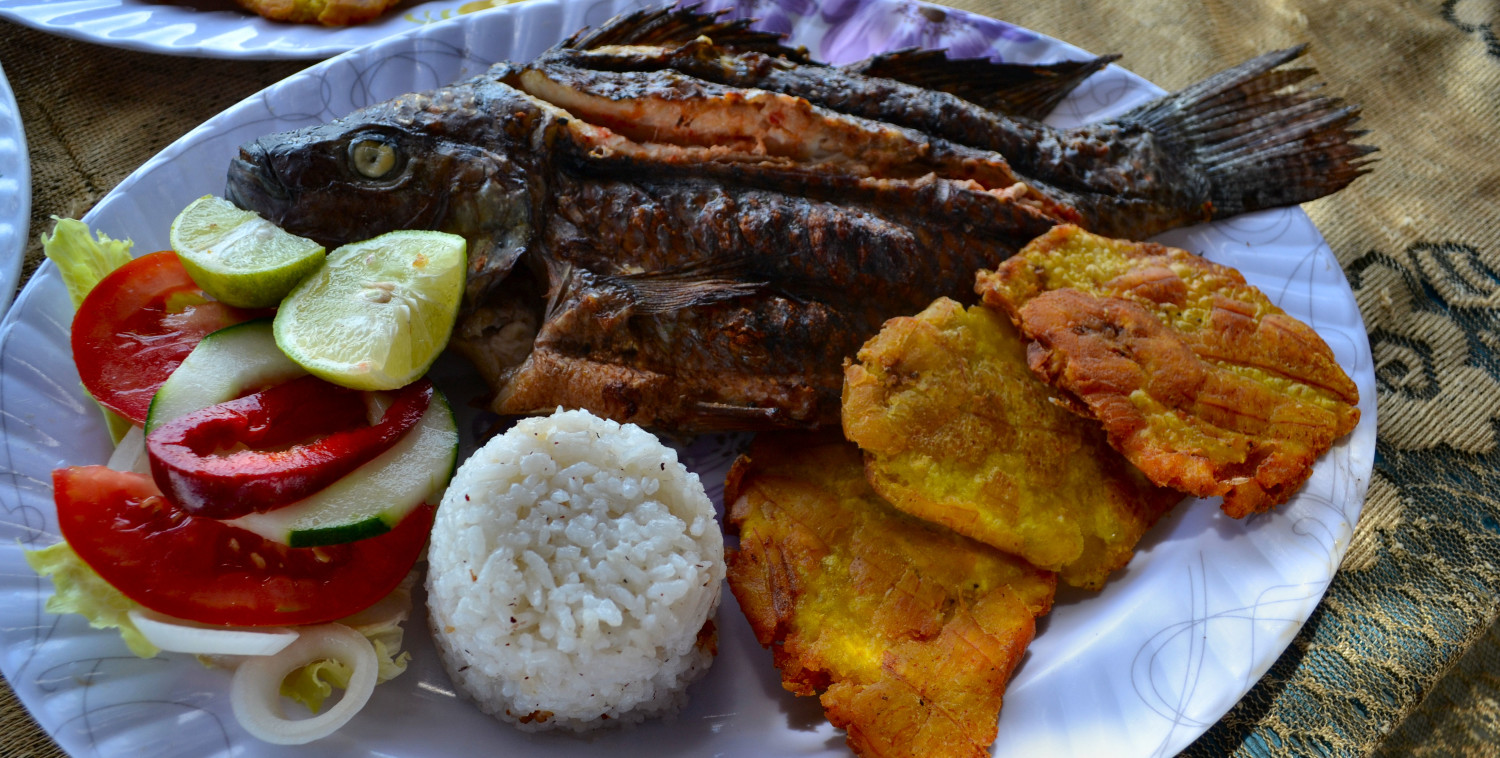Windows on India and Oyster Bar
January 1994
Restaurant Reviews
For some time now I have been convinced that there is only one kitchen in Little India. If you’re not familiar with the region of our city, it hangs about on a one block section of East 6th Street stretching between 1st and 2nd Avenues, and trailing off on each of them for a block to the north and south. It shouldn’t be confused with the other Little India up near Gramercy Park. Regardless of which of the couple dozen dens of Indian cuisine we have entered over the years, the menu was nearly unvaried, the plates arrived the same, and the same waiter could often be found in a rival establishment on another venture. We were quite sure that they merely ducked out the back door to a communal kitchen in mid-block and ducked back in to whichever eatery struck their fancy at the moment.
Decor often seems the most differentiating factor, with the gamut run from handwoven rugs, saris and sitars to one upstairs eatery that looks like a warehouse full of Christmas tree decorations exploded across its walls, ceiling, and yes, even floor. Over time, we’ve paid little attention to one enterprise on the corner of 6th and 1st, as it looked more like a chi-chi bistro than a Bengali beanery. However, on a recent, rainy night, we ventured inside this sanctuary of Indian haute cuisine, Windows on India.
We settled in a back corner and began our usual perusal of the menu. To begin with, the selection is much farther ranging than the usual Sixth Street fare. Selections from all over the Indian subcontinent are available, the most interesting, which we haven’t seen elsewhere, are those from the southern tip of India. Even a short list of Indonesian dishes make it onto the back page. The English descriptions of dishes actually make sense, another novelty.
Beginning with a sampling of breads and appetizers was, of course, a must. There are the usual nans, pooris, parathas, papadams and chapatis, with the addition of versions like mint and roasted garlic, but also a tempting whole wheat rooti and a mouthwatering spring onion, clay oven cooked kulcha.
Hot and cold appetizers abound, from basic salads to a spectacular dal papri, a cold salad of potatoes, yogurt and tamarind sauce topped with crunchy diamonds of fried lentil fritters – almost as addictive as goldfish, the cheddar cheese variety, of course. Hot dishes include banana fritters, eggplant fritters and vegetable fritters (somebody in the kitchen must love that word…). Pakoras and tikkas and kebabs vie with lentil donuts and sauteed chicken livers.
A large selection of main courses come from the tandoori, or clay oven. These are always among our favorites, and here they are done to perfection. Not only that, but in addition to the usual chicken, lamb and beef, there are delectable steaks of salmon and swordfish and even marinated shrimp. Vegetarian dishes are not shirked, with a list that will keep even the most jaded grain and bean fiend in your clan happy. Tangy curries, madras, kurmas, kashmiris, bhunas and vindaloos are only the start to lists of chicken, lamb, beef, fish, shrimp and lobster dishes. The Indonesian sampling is heavy on coconut, but a winner nonetheless. And to top it all off, Windows offers a half dozen combination dinners that allow you to sample several dishes at once!
Although we make it a practice to avoid desserts in Asian restaurants, as New York versions are rarely worth saving a trip down to Little Italy, this place goes beyond (though includes) the usual firni, or rose water pudding and ice cream to show off some traditional desserts like fried sweet cheese balls in rose water syrup, rice pudding with fruit and cardamom, and a homemade pistachio and saffron ice cream.
We’ll be back, we’ve been back, and you should give it a try too. It’s worth walking all the way to the end of the block.
Windows on India, 344 East Sixth Street (at First Avenue), 477-5956. Open 7 days a week, lunch and inner. Cash or credit cards. $10-20 for dinner, depending on just how far you want to go.
When I first moved to New York City I began hearing about this place in Grand Central Station. The station itself was worth the trip, back in those days we still had the giant Kodak photo mounted in the main waiting room. It’s a shame that all they could find to replace it with was a parade of musical artistes panhandling with the city’s blessings. Not to knock some of the talent, and the acoustics are great, but I miss the view. Anyway, I used to hear about this “little place” down in the depths of the station called Oyster Bar. It was years before I got around to checking it out, all I could envision was a lunch counter with a bunch of commuters slurping down oysters on the half shell and washing them down with cold beer. Not bad way to head for home, but who wanted to go down in the basement for that?
Happily, I finally got around to checking this place out. Now, it depends where you walk in on Oyster Bar as to what kind of impression it’s going to make. I happened on the saloon entrance first, a dark-wood paneled stairway leading down into a just as dark-wood paneled, well, saloon. A huge L-shaped bar dominates two sides of the room, the tables are covered with red and white checked cloths, there are swinging saloon-style doors on the entrance and the only thing missing is sawdust on the floor. Of course you could enter into the room with the giant lunch counter that reminds me of nothing so much as a floor plan of the Atlanta airport. And indeed, there are folks sucking down mollusks and quaffing ale. Or then there’s the tile bedecked dining room…Need I go on? This place is huge. Oh, I forgot, there’s this long table displaying the desserts of the day laid out to dazzle the eye. It does.
The menu is something of a chore. First, it’s the size of a page from a large tabloid, say, The National Enquirer. Second, while basically the menu itself never changes, what portion of it is actually available does. What I mean to say is, well, and nobody else will tell you this (our first time in we ordered half a dozen things that weren’t available before the waitress explained), the only things available are the things that have prices next to them. And those change daily. Not just which things have prices, but what the prices are. Yup, they just handwrite in the prices of the day next to the catch of the day. And catch of the day is right on target because the menu is fish. This is not a place for steak or fried chicken. Fish. Okay, and shellfish.
Soups are winners here. Unanimous thumbs-up for the New England and Manhattan clam chowders, mixed reviews on the she-crab soup. The cold poached trout with horseradish is a big hit with our entire clan, but even better, the oyster pan roast, my personal favorite. However, the keys to Oyster Bar are the oysters. While not cheap, ranging from one to three dollars apiece, this is the place to sample those raw delicacies from all over the world. It gave us a chance to really begin to appreciate the diversity of flavors and textures that these things come in. My own preferences lean towards those from the cooler waters around Alaska and Washington states, where they grow plump and juicy so slowly that some of them have probably been there since Cornelius Corneliszoon invented the wind-powered sawmill (look it up, he really did).
Fish is generally prepared simply. You select which of the half dozen to dozen species came in that day, the chef fillets it, cooks it, and serves it to you. No fancy, schmancy sauces or phallic towers of gewgaw perched amidst a moat overrun with flotsam and jetsam. Just delicious, simply prepared, fish.
Oh, and for years, this place has had one of the best American white wine lists in New York, if not the country. And to make it even better, they’ve just opened a wine bar – sixty plus samplings by the glass. Can’t beat that with a grapevine.
Finish up with a trip to look at the dessert table. If nothing catches your eye, your stomach, your heart, you’re probably comatose. Get thee to a surgery. When they have it, I love the fig forte. Give it a try. Head for the depths of the station, and please, at least give a smile to the musician plugging away outside the doors.
Oyster Bar, Grand Central Station, 490-6650. Open Monday to Friday only, for lunch and dinner. Cash or credit cards. Lunch $20-25, Dinner $30-40.
CaB magazine was one of the first publications I ever wrote for. Published by my dear friend Andrew Martin, it covered the Cabaret, Theater, Music and Dining scene in New York City, long before slick publications like Time Out NY and Where NY became popular. We had great fun writing it, and some wonderful writers contributed to its pages. When the magazine folded in the mid-90s, Andrew disappeared from the scene, and rumors had it that he departed from this existence not long after. I was thrilled to find out in mid-October 2005, a decade later, that the rumors were just that. Andrew contacted me after finding my site via that omnipresent force, Google. He’s alive and well and a member of a comedy troupe called Meet the Mistake. Somehow quite fitting!


